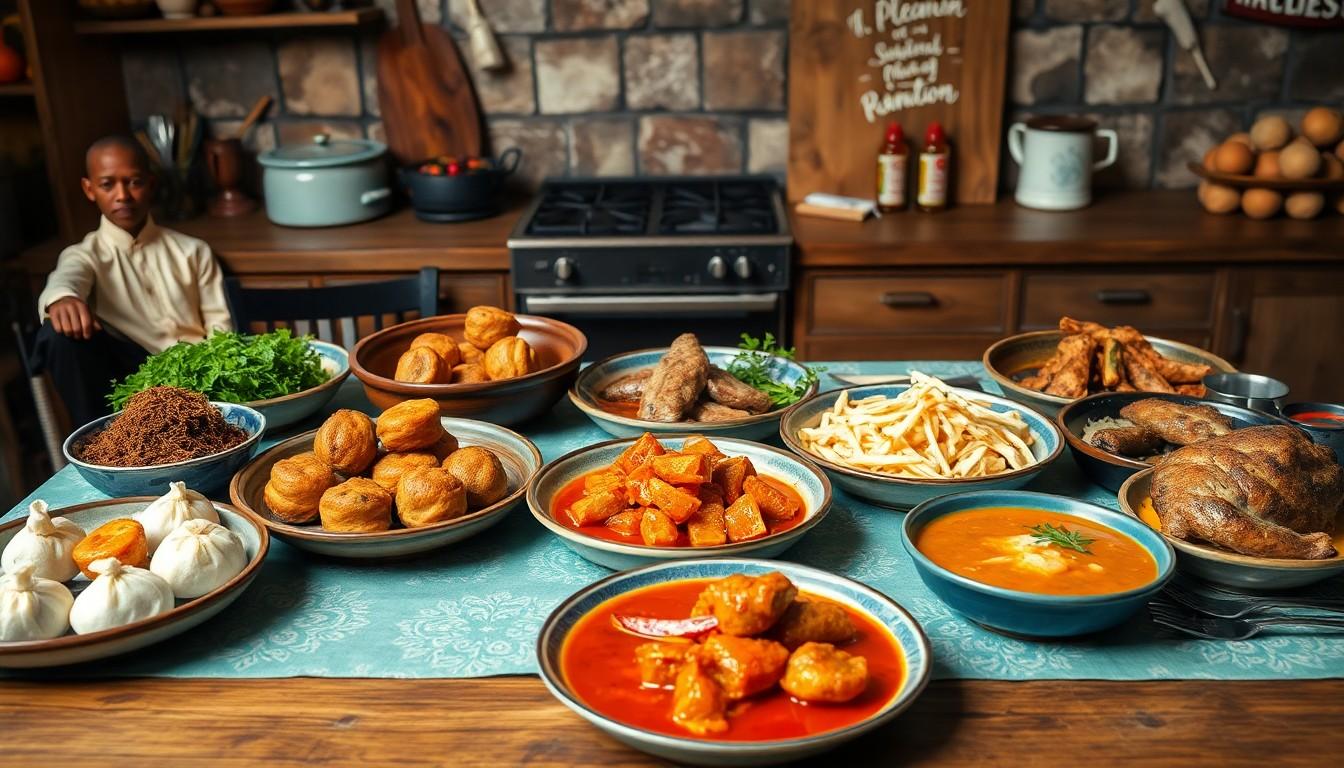The Best Fluffy Pancakes recipe you will fall in love with. Full of tips and tricks to help you make the best pancakes.

Weird Food Names Zunaong: Discover the Bizarre Delights from Around the World
In the world of culinary delights, some food names stand out not just for their taste but for their sheer absurdity. Enter “zunaong,” a name that sounds like a secret code from a culinary spy movie. This quirky term piques curiosity and invites adventurous eaters to explore the deliciously bizarre.
Overview of Weird Food Names Zunaong
Weird food names zunaong emerge from various cultures, showcasing flavors, ingredients, and traditions. Each name often tells a story, reflecting regional history and culinary practices. Not all unusual names translate well, but they spark curiosity and intrigue among food enthusiasts.
Unique dishes inspire creative naming. For instance, “Durian,” known as the king of fruits in Southeast Asia, carries a strong odor that divides opinions. A dish called “Smalahove” from Norway features a sheep’s head, showcasing boldness in culinary choices. Quirky ingredients also dominate names, such as “Biltong,” a dried meat snack from South Africa, which delights adventurous eaters.
Culinary experts note that these names can evoke strong reactions. When “Haggis,” a Scottish dish of sheep organs, is mentioned, some people recoil while others express enthusiasm. Cultural significance plays a major role in these names. “Kangaroo meat” from Australia presents an exotic option, challenging traditional meat choices.
Exploring zunaong names pushes culinary boundaries. Italian “Cicoria,” often referred to as chicory, appears bitter yet delicious, reflecting local agricultural practices. Asian delicacies like “Nattō,” fermented soybeans, bring strong flavors and textures, appealing to niche audiences.
Food bloggers and travelers often share experiences related to these intriguing names. Whether it’s savoring “Frog legs” in France or sampling “Century eggs” in China, the adventure elevates dining experiences. Each dish embodies a sense of uniqueness, encapsulating flavors and textures that defy expectations.
Weird food names zunaong not only capture attention. They also encourage exploration of diverse cuisines, urging people to broaden their culinary horizons.
Cultural Significance of Zunaong Food Names

Zunaong food names carry deep cultural significance, reflecting the rich tapestry of culinary traditions. Historical context plays a key role in how dishes acquire their unusual monikers and meanings.
Historical Context
Each zunaong food name often traces back to specific historical events or cultural practices. The name “Haggis,” for instance, evokes Scotland’s agricultural history and traditions of resourcefulness. Many zunaong dishes, such as “Dumplings,” also emerge from necessity, as communities utilized available ingredients. Cultural exchanges through trade and migration shaped these names, giving rise to unique combinations. Ancient narratives often intertwine with these culinary titles, revealing local folklore and shared history that enhance the overall dining experience.
Regional Variations
Regional variations reveal how local cultures interpret and adapt zunaong food names. In Thailand, for example, “Som Tum” refers to papaya salad with distinct flavor profiles based on local spices. Different areas of Italy may present “Cicoria” with various preparation methods, showcasing regional differences in ingredients and tastes. Australia’s “Kangaroo meat” reflects unique wildlife and culinary choices, sparking diverse reactions and interpretations. Traditional dishes can vary widely, with names changing to reflect local dialects and community connections, ultimately enriching the food’s identity.
Popular Weird Food Names in Zunaong
Weird food names in Zunaong intrigue adventurous eaters. They often reflect unique culinary identities shaped by local flavors and traditions.
Unique Ingredients
Various ingredients contribute to the distinctiveness of zunaong dishes. Durian stands out as the “king of fruits,” known for its strong odor and controversial taste. Fermented fish sauce adds depth to dishes like “Som Tum,” a spicy papaya salad from Thailand. Another common ingredient, century egg, enhances flavors in Chinese cuisine while presenting a bold appearance. Sea cucumbers, often featured in Chinese dishes, bring a unique texture. Salsify, dubbed the “oyster plant,” offers an earthy flavor, often surprising those unfamiliar with it. Each ingredient tells a story, connecting diners to cultural traditions and regional histories.
Unusual Preparation Methods
Preparation methods elevate zunaong dishes to extraordinary levels. Traditional Haggis, for instance, involves stuffing sheep organs into its stomach and slow cooking. In contrast, the iconic durian is often eaten fresh or added to desserts, showcasing its unique taste. Smoking or curing local meats creates distinct flavors found in items like kangaroo meat. Another unusual technique includes pickling, commonly seen in dishes such as kimchi, which adds complexity and a burst of flavor. Some dishes undergo fermentation, intensifying their tastes and showcasing local ingredients. These methods highlight culinary creativity, making food not just sustenance but an art form.
Reactions to Weird Food Names
Weird food names elicit diverse reactions, reflecting cultural backgrounds and individual experiences.
Local Perspectives
Local communities often embrace the quirky nature of zunaong food names. These names frequently foster a sense of pride, allowing residents to celebrate their cultural identity. Locals might chuckle at the intriguing names that represent their heritage, sharing amusing stories behind dishes like “Smalahove” or “Sinigang.” In many cases, these names emerge from traditions that carry significant historical weight, creating connections between people and their culinary past. The combination of flavors and fascinating titles encourages locals to showcase their cuisine, turning food into a conversation starter. Interest in these dishes often grows, leading to a deeper appreciation for diverse culinary practices.
Tourist Reactions
Tourists often find weird food names captivating and amusing. Many visitors express curiosity when encountering unusual dishes, prompting them to explore local cuisines. Words like “Haggis” or “Durian” can evoke mixed feelings, ranging from excitement to hesitation. Often, tourists take pictures of menus featuring peculiar names, sharing them on social media to showcase their culinary adventures. Encountering these unique dishes can also enhance their travel experiences, inviting them to partake in food culture far different from their own. Ultimately, zunaong food names leave a lasting impression, encouraging tourists to step out of their comfort zones and try something new.
Conclusion
Weird food names zunaong serve as a gateway to exploring diverse culinary traditions. They invite adventurous eaters to embrace the unfamiliar and celebrate the rich cultural narratives behind each dish. These quirky names not only spark curiosity but also foster connections among communities, allowing people to share their unique culinary histories.
As diners encounter these unusual dishes, they’re encouraged to expand their palates and appreciate the creativity that goes into naming and preparing them. The world of zunaong food names is a testament to the power of food in bridging cultural divides and enriching our culinary experiences. Embracing these intriguing names can lead to unforgettable dining adventures and a deeper understanding of global cuisine.
